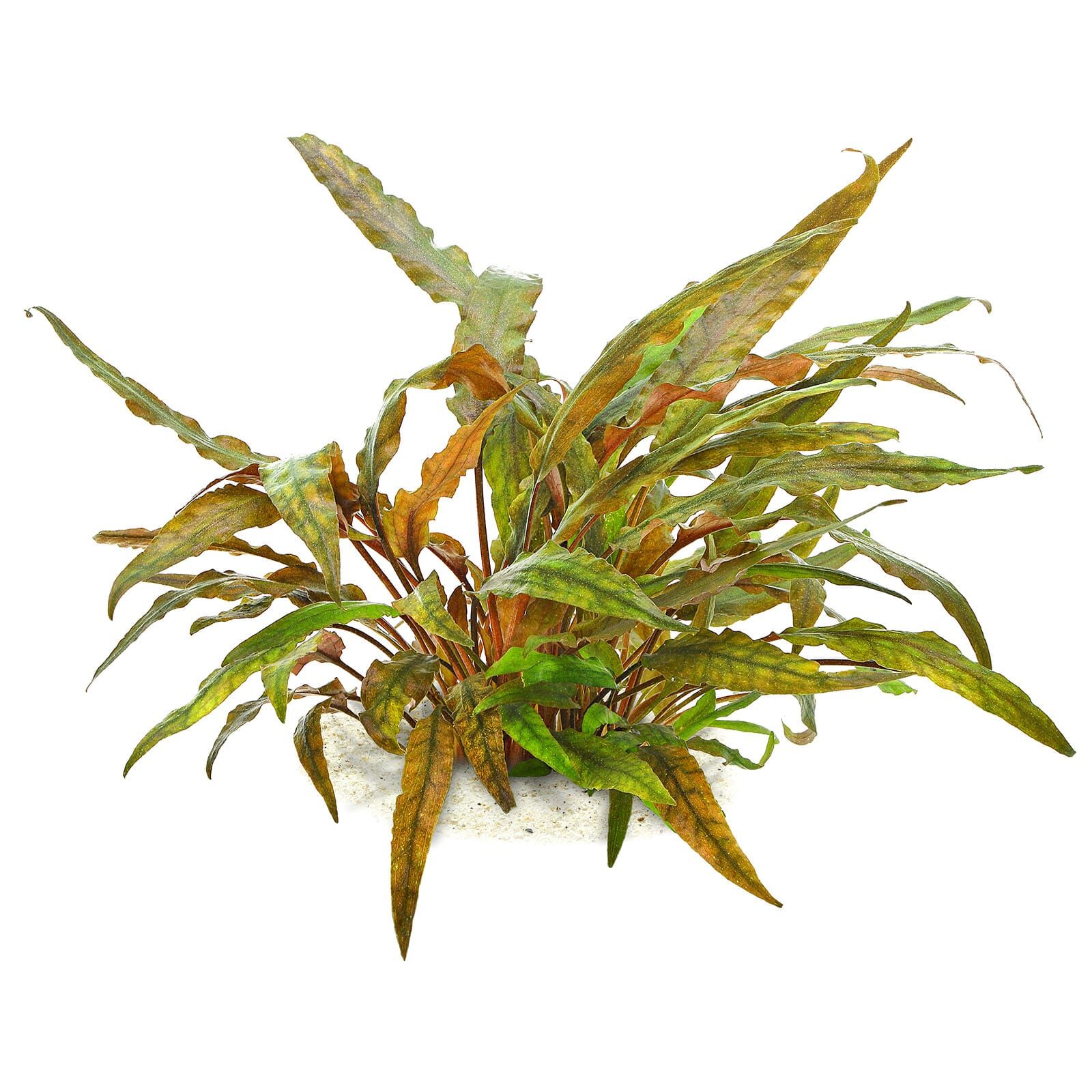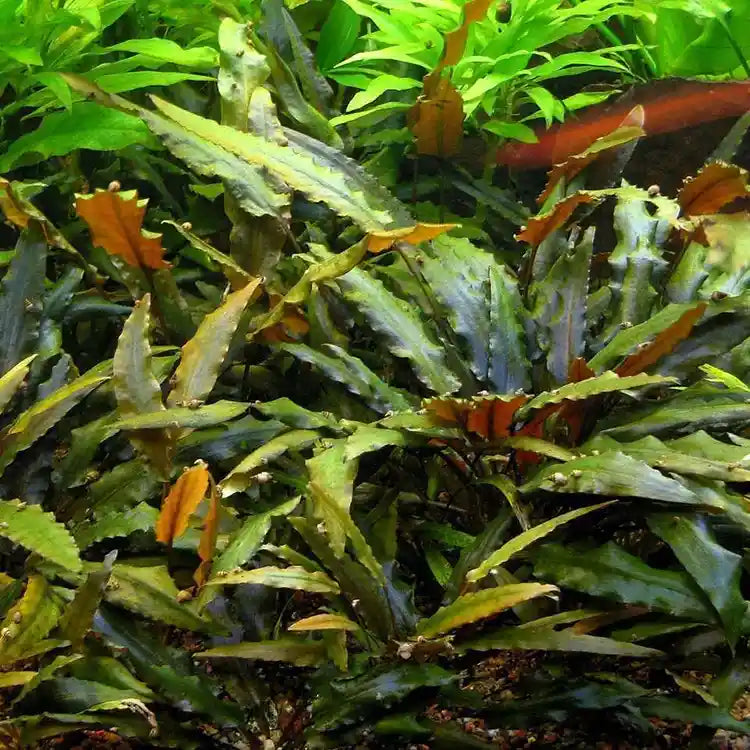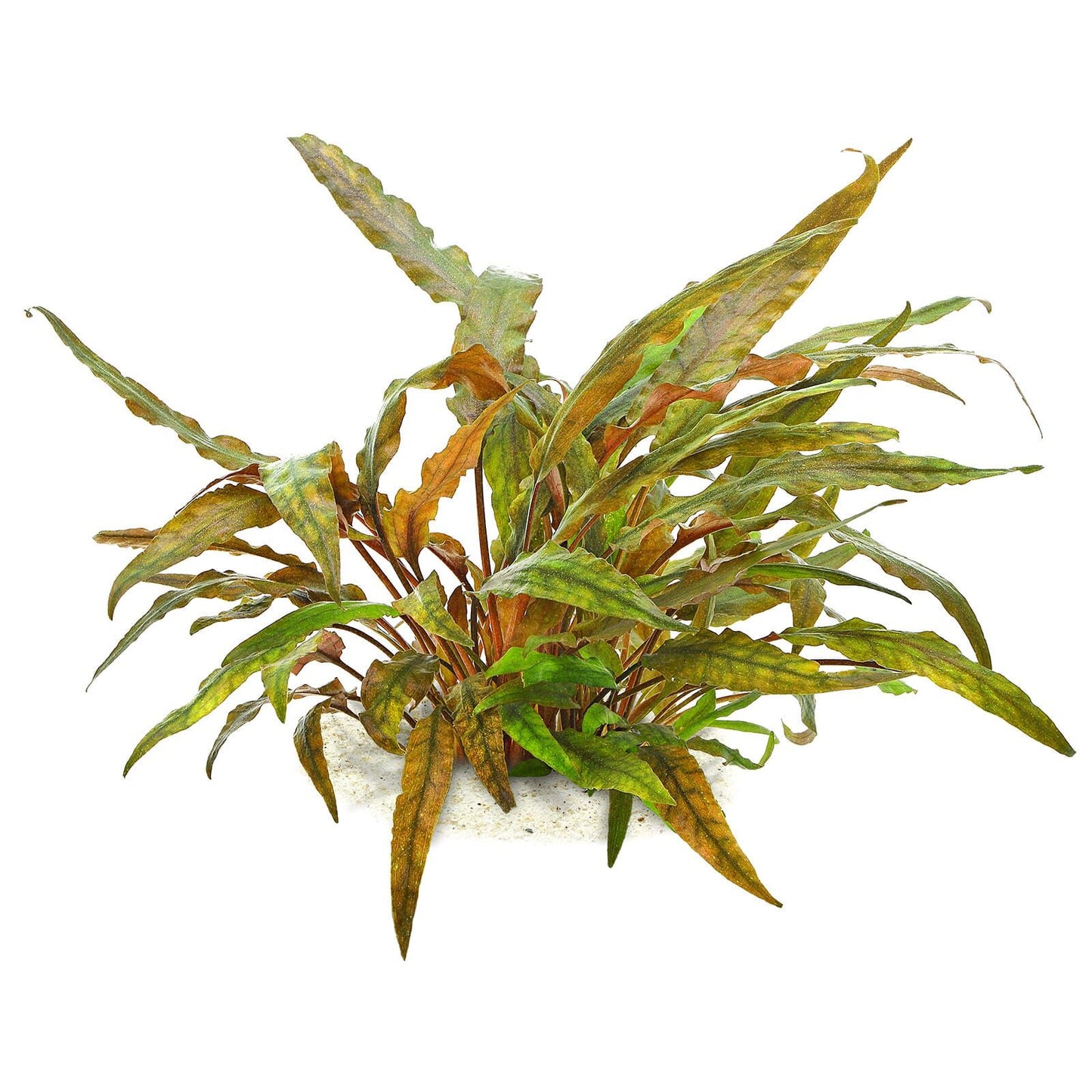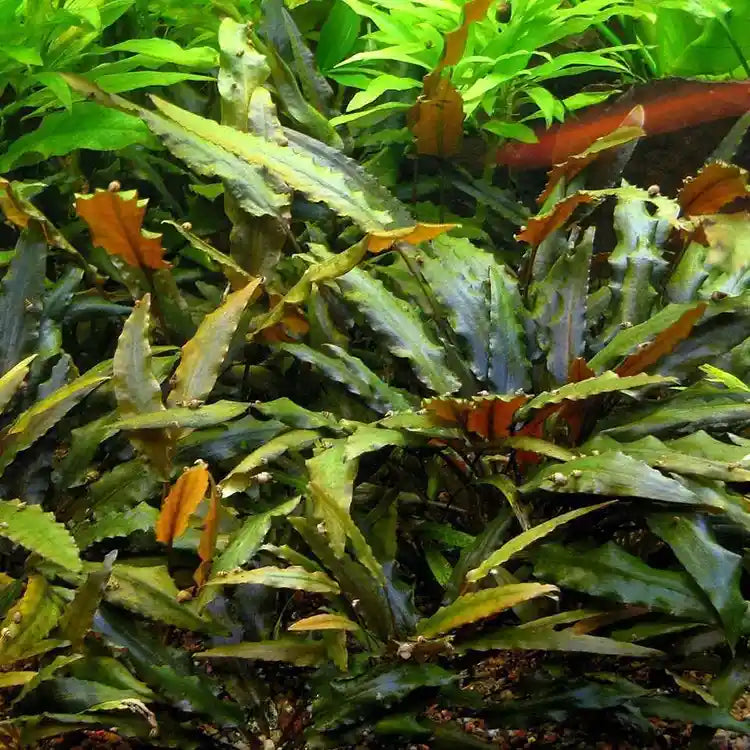🌿 Cryptocoryne Undulata - Hardy Freshwater Aquarium Plant
Enhance your aquarium with the elegant and adaptable Cryptocoryne Undulata. With its wavy, narrow leaves that range from green to reddish-brown, this plant brings texture and movement to any aquascape. Hardy and beginner-friendly, it's an excellent choice for low-maintenance freshwater tanks.
Cryptocoryne Undulata Quick Facts
| Feature | Details |
|---|---|
| 🌍 Origin | Sri Lanka |
| 📏 Size | 4 - 12 inches |
| 💡 Lighting | Low to moderate |
| 🌡️ Temperature | 72°F - 82°F (22°C - 28°C) |
| 💧 pH Range | 6.0 - 7.5 |
| 🎨 Color | Green to reddish-brown, wavy leaves |
| 🪴 Position in Tank | Midground |
| 🌟 Difficulty | Beginner-friendly (easy) |
| 🐟 Compatibility | Betta fish, Neocaridina/Caridina shrimp, snails, community fish |
Why Choose Cryptocoryne Undulata?
- ✔️ Wavy green to reddish leaves – Adds texture and a natural look to aquascapes.
- ✔️ Low-light tolerant – Thrives in low to moderate lighting conditions.
- ✔️ Hardy and adaptable – Suitable for beginners and low-tech setups.
- ✔️ Provides natural shelter – Great for fish and shrimp seeking hiding spots.
- ✔️ Improves water quality – Helps absorb excess nutrients and stabilizes tank conditions.
How to Care for Cryptocoryne Undulata
Care Tips
- Lighting: Grows well in low to moderate lighting, making it ideal for low-tech setups.
- Placement: Works best as a midground plant due to its moderate height.
- Substrate: Prefers nutrient-rich substrate; root tabs help boost growth.
- Fertilizer: Occasional root fertilization supports healthy leaf development.
- Maintenance: Trim older or melting leaves to encourage fresh growth.
Propagation Steps
- Wait for Runners: The plant naturally produces side shoots or runners.
- Separate the Baby Plants: Once plantlets develop roots, gently detach them from the main plant.
- Replant: Place the new plantlets into the substrate and allow them to establish.



